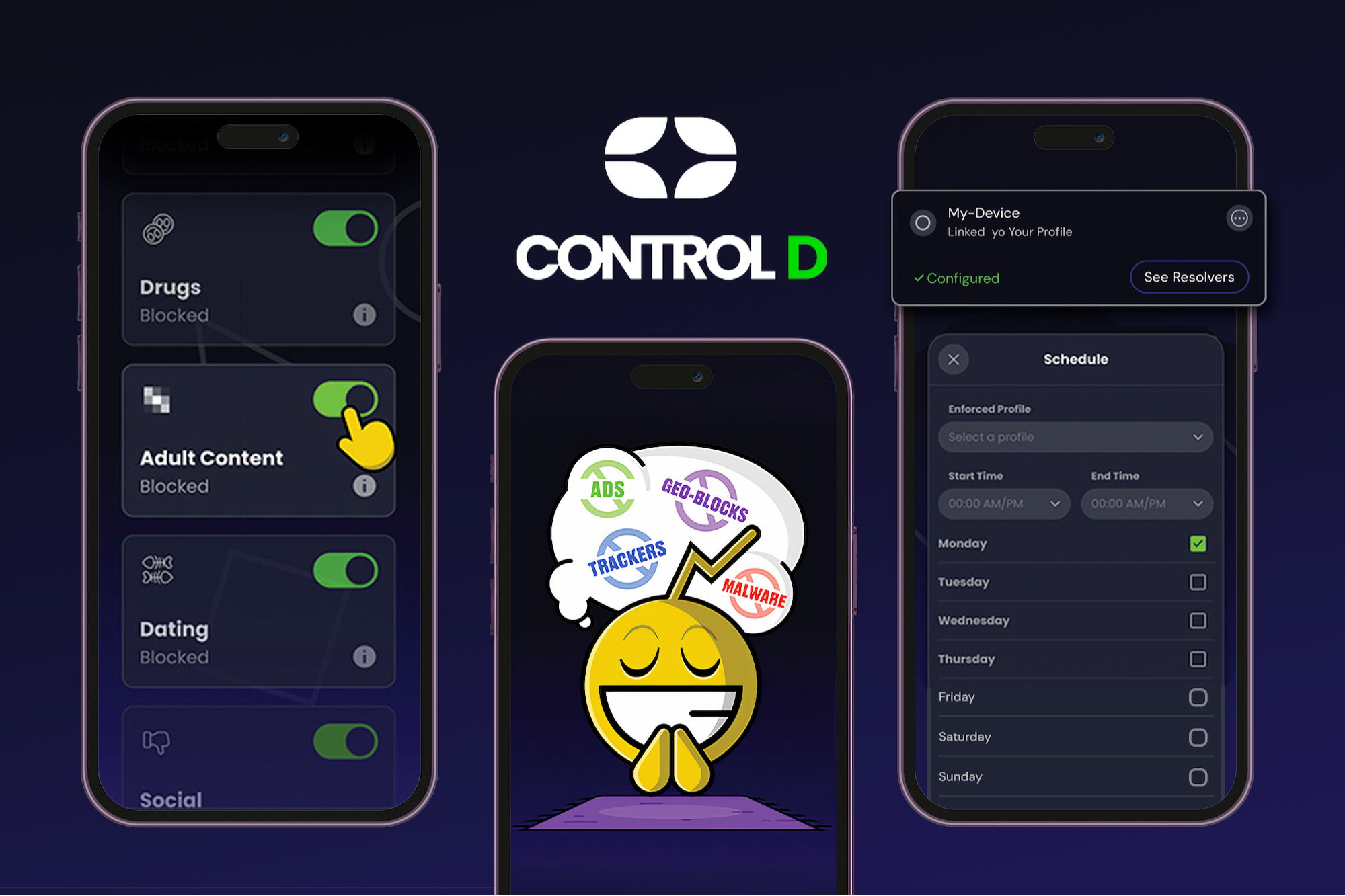AFFILIATE MARKETING
7 Keys to Unlocking Success in 2023

Working your way through each of the steps in this article about how to validate your business idea will save you time, and money, in the long run.
Idea validation helps determine if a potential customer will buy your product or use your intended services.
Most importantly, you will know whether your business will be profitable.
Read on as I share the seven essential steps that will assist you when validating your business idea.
How to Validate Your Business Idea
Market validation is the process of finding out if your product or service is in demand by consumers. You need to do it so you don’t leave the odds of your startup’s success up to chance. This is where the power of assumption could get you nowhere in a hurry, so don’t cut corners.
Idea validation will go a long way to not wasting time and resources on a product that may not appeal to the market.
By validating your idea, you will foster confidence among the people you approach for finance. Even existing businesses need a solid business plan if they approach investors, financial institutions, or crowdfunding groups on behalf of a lean startup. Only then will they “talk money.”
Once you have worked your way through validation, you will have a blueprint of your business model. You will know how your product aligns with the wants and needs of potential customers.
Doing proper product validation will strengthen your service offering if it is in demand. And that will entice people to make purchases.
1. Clarify Your Business Idea
Having a clear vision and well-defined goals is important when starting a business.

Start the process with a Q&A session with yourself:
- What problem will my business solve?
- How can I provide my customers with value?
- Why would customers pick me over my competitors?
This validation groundwork will help shape a purposeful direction for your venture. It will also form the foundation of the steps to follow as you confirm your business idea.
So this next step’s goal is to identify what makes your product idea or service offering unique. You want to be sure that your startup idea is one that customers would choose over the thousands like you out there!
2. Do Market Research
Market research plays a crucial role in understanding your industry, customers, and trends in the market. Your target market relates to the group of people who use your business category.

Start by collecting information about your target market’s demographics, behaviors, and preferences. Use your products and services to address their needs using information about their desires and pain points.
I delve a little deeper into how to go about learning more about your target audience later.
On we go!
Analyze market trends and study your competitors to identify potential opportunities and challenges. Conduct surveys, interviews, or focus groups to gather insights from your target audience about your great idea.
We live in a spectacular age where tech resources are improving by the day – make use of it! Work smart and not hard by using the hive of information available on the internet. You can maximize online resources, industry reports, and social media analytics (Facebook ads).
Collect data and information used by others from Google Analytics, Google Trends, and Google AdWords. You can also check out digital marketing intelligence like Semrush for insights.
Questions to Ask
Here are a few questions to help you along as you consider how to validate your business idea. They cover essential aspects such as problem validation, market analysis, competitive differentiation, value proposition, revenue generation, and validation methods:
- What specific problem or need does your business idea address, and who experiences it?
- Who are your direct and indirect competitors, and how does your idea differentiate itself?
- What value or benefit does your business idea provide, and how does it outperform existing alternatives?
- How will your business generate revenue, and have you analyzed its profitability and scalability?
- What validation methods have you used or plan to use to gather feedback and refine your idea?
Doing thorough validation research will help you make informed decisions. Then you can tailor your offerings and position your business for success.
3. Identify Your Target Audience
So, now that you have done some market research, you need to identify your audience. Your audience is your target customer who tends to make use of businesses like yours.

This is where the AI Tool ChatGPT can be of help in giving you basic answers to questions you may have. It can help you refine the characteristics of your business category’s ideal customers.
Consider demographics such as age, gender, location, and income level when you prompt the chatbot. Remember, this will only be a general idea of your ideal customer because ChatGPT’s knowledge base is not up to speed with current market analysis.
AI can help you understand customer behaviors, preferences, and purchasing habits. By pinpointing past habits, you will have greater insight. That way, you can know what problems your product or service will solve for them.
Do some networking with people who fit the profile. Get them to take part in surveys and interviews to gather insights. This will help you create detailed buyer personas that represent your target audience.
These first “customers” will form the basis for growing the interactive client base you should aim for.
4. Analyze the Competition
Analyze other companies like yours if you want to understand your business category’s landscape.

Further questions to ask would be:
- Who are your direct and indirect competitors?
- What products, services, pricing, and marketing strategies do they offer clients?
Look for gaps or areas where you can differentiate your business from the ones already out there. Understand their strengths and weaknesses to identify potential opportunities for your venture.
A helpful tip is to conduct a SWOT analysis. In case you don’t know what SWOT stands for, it’s an acronym for Strengths, Weaknesses, Opportunities, and Threats.
Here’s an example of a SWOT analysis that covers a hypothetical business you might be up against.
This is a SWOT analysis for a fictional software company.
Strengths:
- Qualified and experienced development team
- Cutting-edge technology and software solutions
- Strong reputation and positive customer feedback
- Efficient project management and delivery processes
- Well-established partnerships with industry leaders
Weaknesses:
- Limited marketing budget and brand recognition
- Small customer base compared to competitors
Opportunities:
- Growing demand for software solutions in emerging markets
- Potential for expanding customer base through strategic marketing efforts
Threats:
- Intense competition in the software industry
- Rapid technological advancements requiring continuous innovation
By analyzing the competition, you will gain valuable insights that will help you position your business to your advantage.
5. Create a Minimum Viable Product (MVP)
Creating an MVP lets you test your business idea with a basic version of your product or service.

Once you know what your product’s core features are, you can create a prototype. Use this simple version to test-run a mini-version of what your business will be offering. Once you have done that, gather feedback and iterate based on your interactions. Use a small group of target users or stakeholders to help you with this step.
These valuable insights will also grow confidence in your ability to adjust.
Now you will be ready to plunge into spending resources on the full-scale model.
Launching an MVP will cut your risk and optimize your product development process. It will ensure that your final offering meets the needs and expectations of your target audience.
6. Gather Feedback and Iterate
I want to highlight how important this part of the process is. Gathering honest feedback from industry experts, potential customers, advisors, and stakeholders is crucial for improving your small business idea!
Do this at various stages, such as product development, after launch, and through customer interactions.
Take all criticism as constructive, and use all the information you gather to improve your offering.
Once you are on the go, pay special attention to surveys, customer interviews, or online feedback platforms to gather insights. Acknowledge both positive and negative feedback.
Make the necessary adjustments to enhance your product, service, or business strategy. Get used to this part of the process because successful companies never stop gathering feedback and iterating.
7. How to Validate Your Business Idea – Financial Considerations
I will spend a little more time on this step. Without the startup finance to back you up, you are pretty much stuck at having a good idea.

- Determine your startup costs. This includes expenses such as equipment, inventory, office space, marketing, and legal fees. Calculate these costs and create a budget. This way, you will have a clear understanding of your financial needs.
- Consider your sources of funding. Are you a startup founder that will be self-funding your business? Or, will you be seeking loans from banks or pursuing investments from venture capitalists or angel investors? Weigh up the pros and cons of each option and determine the best fit for your business.
- Develop a financial plan. Forecast your revenue and expenses for the first few years of operation. Consider factors such as pricing, sales projections, and overhead costs. This will help you understand your financial sustainability and make informed decisions.
- Keep an eye on your cash flow. Check your income and expenses often. This way, you can ensure you have enough funds to cover operational costs. Avoiding cash flow shortages is key. Nobody likes unexpected outlays. Make a point of implementing proper bookkeeping and financial tracking systems. You want to maintain accurate records.
- Consider legal and tax obligations. Consult with professionals to ensure you meet regulations, licenses, permits, and tax requirements. Failure to do so can lead to financial penalties and legal issues down the line. Don’t go there!
- Review and adjust your financial plan often. As your business evolves, your financial considerations will change. Stay proactive and make necessary adjustments to optimize your financial performance. This will ensure long-term success.
Why Validating Your Business Idea is Essential
Validating your business idea is essential because it allows you to assess market demand. It also ensures that there is a customer base willing to buy what you’re offering.

Refine your concept by engaging with potential customers, gathering feedback, and doing research. This way, you can address weaknesses or flaws and increase the chances of long-term success.
Validation also helps attract investors or secure funding. It provides tangible evidence of market interest and potential profitability, mitigates risks, and makes necessary adjustments.
If you have doubts about your business idea once you have gone through the validation process, you may want to look at other options. Here are some articles worth reading:
Conclusion – How to Validate Your Business Idea
In conclusion, validating your business idea is a vital step toward building a successful venture.
By understanding your market, you can refine your offering. The feedback will pave the way for a powerful and impactful business.
Embrace the process of validation! Embark on your journey with confidence, and don’t cut corners. When you are on the path to creating a thriving enterprise that will meet the needs of your target audience, you will have the confidence to succeed!
Once you are ready, register your limited liability company (LLC) with state and local governments. You can get all the necessary registration details from the U.S. Small Business Administration website. Alternatively, you could get a company like Northwest to help you with that.
All the best with your new venture!
AFFILIATE MARKETING
Franchising Is Not For Everyone. Explore These Lucrative Alternatives to Expand Your Business.

Opinions expressed by Entrepreneur contributors are their own.
Not every business can be franchised, nor should it. As the founder and operator of an exciting, new concept, it’s hard not to envision opening a unit on every corner and becoming the next franchise millionaire. It’s a common dream. At one time, numerous concepts were claiming to be the next “McDonald’s” of their industry.
And while franchising can be the right growth vehicle for someone with an established brand and proven concept that’s ripe for growth, there are other options available for business owners who want to expand their concept into prime locations before their competition does but who don’t want to go it alone for a number of reasons. For instance, they may not have the resources or cash reserves to finance a franchise program (it is important to note that while franchising a business does leverage the time and capital of others to open additional units, establishing a franchise system is certainly not a no-cost endeavor). Or they don’t want the responsibilities and relationship of being a franchisor and would rather concentrate on running their core business, not a franchise system.
Related: The Pros and Cons of Franchising Your Business
But when you have eager customers asking to open a branded location just like yours in their neighborhood, it’s hard to resist. You might think: What if I don’t jump on the deal, and I miss out on an opportunity that might not come around again?
Licensing your intellectual property, such as your name, trademarks and trade dress, in exchange for a set fee or percentage of sales is one way to accomplish this without having to go the somewhat more laborious and legally controlled franchise route. Types of licensing agreements range from granting a license to allow another entity to manufacture or make your products to allowing someone to use your logo and name for their own business. Unlike in a franchise, your partner in a licensing situation will only be allowed certain predetermined rights to sell your products and services, not an all-in agreement to give them a turnkey business, accompanied by training and support, in exchange for set fees. A licensing agreement spells out each party’s rights, responsibilities, and what they can and cannot do under the terms of the agreement. Having a lawyer draw up the paperwork is vital, as well as consulting with a trusted business advisor who has helped others along this path and can shorten your learning curve while protecting your rights. License agreements are governed by contract law as opposed to franchise laws. However, care must be taken: To ensure that you’re staying in your lane and not crossing over into franchisor territory, you’ll want your advisers to detail what you can and can’t do as a licensor.
For instance, a license agreement excludes you from being involved in the day-to-day operations of the licensee’s business. While having no oversight may sound like a relief, it can be a double-edged sword, especially for people who are used to controlling all aspects of their products or services. You won’t have to provide licensees with ongoing services, such as marketing materials and continuous training, but it also means you have no control over how they run their business, their product mix or even how they decorate their space. If you’re a type-A, this may be hard for you.
Most people are more familiar with trademark licensing with a third party because these agreements are big in the sports and entertainment industries, where a celebrity lends their name to endorse a product, whether it’s branded athletic wear or trendy foodservice menu items such as pizza, chicken, or even gelato.
Using a celebrity’s cache garners media attention you might otherwise never get. But not everyone who comes up with a great concept or product has the recognition that would allow them to attract famous business partners or endorsements, and rabid fans that follow.
There are other methods of getting your products in front of more consumers. Some coffee concepts, including Caribou for example, have created market saturation by both franchising traditional stores and granting licenses for nontraditional locations, such as airports, big-box stores, and college campuses. Others, on the other hand, like Starbucks, employ a combination of company-owned stores and licensees in high-traffic locations where a small kiosk can service a high-density population of shoppers. And, of course, bags and pods of these brands’ coffee blends are also sold in retail locations such as grocery stores.
Related: Startups Must Protect Their Trademark. Here’s How and Why
But again, here’s that cautionary note: If you go the licensing route for your products or services, be careful not to cross over into trying to direct the way that licensees do their business, from selecting locations to training employees.
While licensing or franchising may be valid business growth vehicles for many brands, additional business structures that can be considered include:
- Company-owned stores: Opening corporate locations using bank loans and/or the profits from already opened units.
- Dealerships or distributorships: In a distributor relationship, products are purchased from a manufacturer and then sold through local dealers.
- Agency relationships: These are similar to the relationships you’d have with dealers, but in this case, an agent or representative of your company sells your services to a third party. The important distinction to remember so that the relationship doesn’t cross over into franchise territory is that you, as the provider of the services, pay the agent (as an independent sales rep) rather than the agent collecting the money and paying you.
- Joint ventures: In this case, you, as the concept owner, would take on an operating partner who also invests his own funds in the business. The two of you would then share in the equity and profits at the percentage rate of your investment.
The appropriate method to grow your business depends on several factors, including your type of concept, service, or products; your risk aversion factor; your access to capital; where you’re located; and current market conditions. So, if you choose another option to franchising, be cognizant of not slipping into becoming a franchise. The Federal Trade Commission’s regulations define a franchise as meeting at least three standards: a shared name, fees and royalty payments paid to the company by the franchisee, and ongoing support and control of the day-to-day operations by the franchisor.
Keep in mind that if you start with one expansion method, you can consider changing that structure with legal and professional guidance should your business needs merit a shift in strategy. Case in point: some licensors will eventually convert licensees to franchises under a newly crafted agreement and program if they see the need to change the fee structure and maintain additional control over operations.
Slow growth can be detrimental to a business, but not picking the right vehicle for that growth can be worse than standing still. That’s why doing your homework — consulting with professionals, such as attorneys, accounting and franchising advisors, and talking to others in the same boat as you will save you from drifting too far from shore.
AFFILIATE MARKETING
How to Control the Way People Think About You
Opinions expressed by Entrepreneur contributors are their own.
In today’s digital age, where personal branding and public perception play a vital role in success, strategic PR efforts have become more important than ever. Ulyses Osuna, the founder of Influencer Press, joined our show to share valuable insights on the significance of PR, the evolving landscape, and the keys to achieving business growth while maintaining a fulfilling personal life.
One of the key takeaways from the conversation was the importance of strategic PR efforts in building a personal brand and shaping public perception. Ulyses emphasized that PR is not just about getting media coverage; it’s about controlling the narrative and shaping how others perceive you. By strategically positioning yourself and your brand through effective PR, you can influence public opinion and establish yourself as an authority in your field. Another crucial aspect discussed was the power of leveraging relationships and connections.
Ulyses highlighted the “Buglight Concept,” which involves utilizing the support and connections of others to achieve success. By building strong relationships and leveraging the networks of influential individuals, you can significantly expand your reach and influence. Ulyses’s own success with Influencer Press is a testament to the power of connections in the PR world. While professional success is undoubtedly important, Ulyses also stressed the significance of balancing personal time and fulfillment. In the pursuit of business growth, it’s easy to neglect personal well-being and relationships. However, Ulyses emphasized that true success lies in finding a balance between professional achievements and personal happiness.
By prioritizing personal time and fulfillment, entrepreneurs can sustain long-term growth and avoid burnout. In the ever-evolving landscape of PR, Ulyses highlighted the need for a clear mission when seeking press coverage. He emphasized the importance of aligning your brand with a cause or purpose that resonates with your target audience. By having a clear mission and purpose, you can attract media attention that aligns with your values and goals, ultimately enhancing your brand’s reputation and reach. Additionally, Ulyses discussed the importance of pricing services correctly and finding the right balance between personal involvement and business scalability.
The conversation also touched upon the dynamics of client relationships and the impact of showcasing external support. Ulyses emphasized the value of building strong relationships with clients and going above and beyond to exceed their expectations. Furthermore, he highlighted the importance of showcasing external support, such as media coverage or endorsements, to establish credibility and attract new clients. Ulyses’s own podcast, The Blacklist, where he shares insights and interviews successful entrepreneurs, was also discussed. He explained that launching the podcast was a way to give back to the entrepreneurial community and share valuable knowledge.
By continuously learning from others and implementing breakthrough ideas, Ulyses emphasized the importance of immediate action and continuous improvement for business growth. In conclusion, strategic PR efforts are essential for building a strong personal brand and controlling the narrative in today’s digital age. By leveraging relationships, finding a balance between personal and professional life, and having a clear mission, entrepreneurs can shape public perception, expand their reach, and achieve long-term success. Ulyses Osuna’s insights serve as a valuable guide for those looking to navigate the ever-changing landscape of PR and personal branding.
About The Jeff Fenster Show
Serial entrepreneur Jeff Fenster embarks on an extraordinary journey every week, delving into the stories of exceptional individuals who have defied the norms and blazed their own trails to achieve extraordinary success.
Subscribe to The Jeff Fenster Show: Entrepreneur | Apple | Spotify | Google | Pandora
AFFILIATE MARKETING
Set Your Team up for Success and Let Them Browse the Internet Faster

Disclosure: Our goal is to feature products and services that we think you’ll find interesting and useful. If you purchase them, Entrepreneur may get a small share of the revenue from the sale from our commerce partners.
According to TeamStage, 31 percent of employees waste about a half hour each day, and the top 10 percent of them can waste as much as three hours in a day. Part of that might be attitude, but the other part might be hangups caused by internet speed and advertisements. To nip that lost time in the bud, consider equipping yourself or your team with a tool to help stay on task.
From April 15 through 21, this five-year subscription to Control D Some Control Plan is on sale for just $34.97 (reg. $120). This is the best price for this deal online. This tool is designed to help users browse and use the internet faster while also blocking ads.
Control D is described as a “one-touch solution” for taking control over the productivity of your computer and internet usage. The deal supports use for up to ten devices, and it empowers each user to block advertisements, enjoy faster browsing, and set internet safety rules and restrictions for kids.
Control D’s bandwidth is substantial. It can accommodate up to 10,000 custom rules, block more than 300 servers, support multiple profiles, and unlimited usage. This robust and well-designed tool is a reliable option for any business leader who wants to liberate themselves or team members from distractions online.
Control D is rated a perfect 5/5 stars on Product Hunt.
Remember that from April 15 through 21, this 5-year subscription to Control D Some Control Plan is on sale for just $34.97 (reg. $120)—the best price on the web.
StackSocial prices subject to change.
-

 PPC6 days ago
PPC6 days ago19 Best SEO Tools in 2024 (For Every Use Case)
-

 MARKETING7 days ago
MARKETING7 days agoEcommerce evolution: Blurring the lines between B2B and B2C
-
SEARCHENGINES5 days ago
Daily Search Forum Recap: April 19, 2024
-
SEARCHENGINES6 days ago
Daily Search Forum Recap: April 18, 2024
-

 WORDPRESS6 days ago
WORDPRESS6 days agoHow to Make $5000 of Passive Income Every Month in WordPress
-

 SEO7 days ago
SEO7 days ago2024 WordPress Vulnerability Report Shows Errors Sites Keep Making
-

 WORDPRESS6 days ago
WORDPRESS6 days ago10 Amazing WordPress Design Resouces – WordPress.com News
-
WORDPRESS7 days ago
[GET] The7 Website And Ecommerce Builder For WordPress















